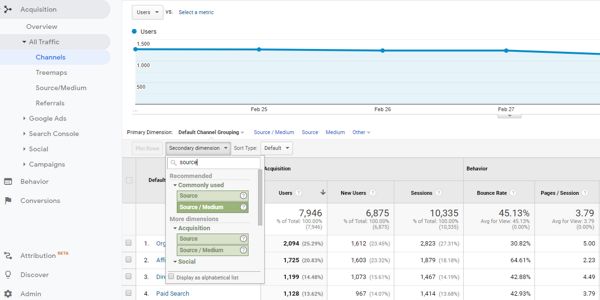Opening the Power of Additional Measurement Analytics for Boosted Data Insights and Decision-Making
In the realm of information analytics, main measurements frequently take the spotlight, but the true deepness of insights lies within the world of secondary measurements. By taking advantage of the power of additional dimension analytics, companies can introduce hidden patterns, uncover correlations, and extract a lot more purposeful verdicts from their data.
Relevance of Secondary Measurements
Checking out the value of secondary measurements in analytics introduces the hidden layers of information insights important for informed decision-making in different domains. Secondary measurements give a much deeper understanding of primary data by supplying added context and point of views. By incorporating additional measurements into analytics, organizations can draw out more nuanced and detailed insights from their datasets.
One key relevance of second dimensions is their capability to sector and categorize main data, enabling a much more detailed analysis of details subsets within a dataset. This segmentation enables organizations to recognize patterns, fads, and outliers that might not be noticeable when considering the data all at once. Secondary measurements help in uncovering correlations and reliances between different variables, leading to even more precise forecasting and predictive modeling - secondary dimension.
Moreover, secondary measurements play a critical role in improving data visualization and coverage. By adding secondary dimensions to visualizations, such as graphes or charts, experts can create extra insightful and interesting representations of information, facilitating far better communication of searchings for to stakeholders. In general, the assimilation of secondary measurements in analytics is important in opening the full capacity of information and driving evidence-based decision-making.
Secret Advantages of Utilizing Additional Measurements
Using second measurements in analytics uses organizations a tactical advantage by increasing the deepness and granularity of information insights. By dissecting data using second measurements such as time, location, device kind, or individual demographics, companies can uncover patterns, fads, and connections that might otherwise remain surprise.
In addition, the use of secondary measurements boosts the context in which main information is interpreted. By leveraging secondary dimensions in analytics, organizations can harness the complete potential of their data to drive much better decision-making and achieve their company goals.
Advanced Data Evaluation Techniques
A deep study advanced data evaluation strategies reveals innovative techniques for extracting useful insights from complicated datasets. One such method is equipment learning, where formulas are employed to recognize patterns within information, anticipate outcomes, and make data-driven choices. This method allows for the automation of analytical model structure, enabling the handling of big quantities of information at additional info a quicker pace than conventional techniques.
An additional sophisticated technique is anticipating analytics, which utilizes analytical algorithms and artificial intelligence techniques to anticipate future end results based upon historical information. By analyzing patterns and trends, services can expect client habits, market trends, and possible threats, empowering them to make proactive choices.
In addition, text mining and sentiment evaluation are useful methods for removing understandings from disorganized information sources such as social media sites comments, customer testimonials, and survey reactions. By assessing message information, companies can comprehend client viewpoints, recognize emerging patterns, and boost their solutions or items based upon comments.
Enhancing Decision-Making With Additional Measurements

Enhancing decision-making via second dimensions enables services to make even more educated and targeted calculated options. By segmenting consumer information based on additional measurements like buying history or involvement degrees, companies can customize their advertising approaches to certain target market segments, leading to enhanced conversion rates and customer satisfaction. Additional measurements can help recognize relationships and relationships between various variables, making it possible for companies to make data-driven choices that drive growth and productivity.
Implementing Secondary Measurement Analytics
When including secondary measurements in analytics, organizations can open deeper insights that drive strategic decision-making and boost total performance. This entails understanding the particular inquiries the organization looks for to answer and the data factors needed to resolve them.

Additionally, companies ought to leverage progressed analytics tools and innovations to simplify the procedure of including secondary measurements. These devices can automate information handling, evaluation, and visualization, allowing organizations to concentrate on translating insights instead of hands-on data manipulation.
Verdict
In verdict, second measurement analytics play an essential role in improving information insights and decision-making procedures. By using sophisticated data analysis methods and executing additional measurements efficiently, organizations can open the power of their data to drive strategic service decisions.
In the world of information analytics, main dimensions often take the spotlight, but the true depth of insights lies within the realm of secondary dimensions.Making use of secondary dimensions in analytics supplies companies a strategic benefit by increasing the depth and granularity of information understandings. By leveraging additional measurements in analytics, organizations can harness the full potential of their information to drive far better decision-making and achieve their service purposes.
Implementing information recognition processes and routine audits can assist preserve information quality and dependability.
By making use of innovative information evaluation methods and executing additional dimensions effectively, organizations can unlock the power of their information to drive strategic service decisions.